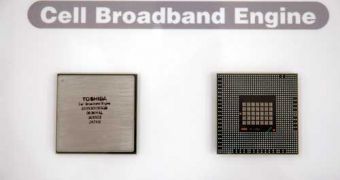The PlayStation 3 console is not only one of the most advanced gaming devices in the world, but also the perfect tool in the research of robotics. A couple of UCI students used the console to take part in IMB's Cell Broadband Engine Professor University Challenge. The three youngsters worked together with two Dartmouth College students and tried to recreate the human brain's functions with the aid of Sony's console.
Their research generated some pretty interesting results, showing that the PS3 can reproduce some of the human brain's functions. However the group of students was more focused on visual processing, considering that previous attempts in the field had failed, because machines had a hard time recognizing objects and shapes.
It took approximately eight months for the youngsters to figure out the potential of 3 PS3 systems, linked together and connected to a PC. The difference between the PS3 and the other next-gen consoles lies in is processor, an IBM Cell, ideal for parallel programming. Turns out that Sony's device is suitable for other applications than the standard games and the PS3 trio managed to take the role of a supercomputer.
After months and months of messing around with the consoles' architecture, the students got the system to recognize objects with a delay of only one second. The huge breakthrough earned them $10,000, but the real achievement is topping the other 80,000 contenders to the prize. Such an initiative is only the beginning as the students are keener than ever on using hardware algorithms in order to reproduce the functions of the human brain.
Sony's console has also been involved in many other experiments, with medical purposes like researching Parkinson's disease or the Mad Cow disease. Maybe one day, the PS3 will prove all of its haters wrong and aid scientists in their search for the cure for AIDS or cancer.

 14 DAY TRIAL //
14 DAY TRIAL //